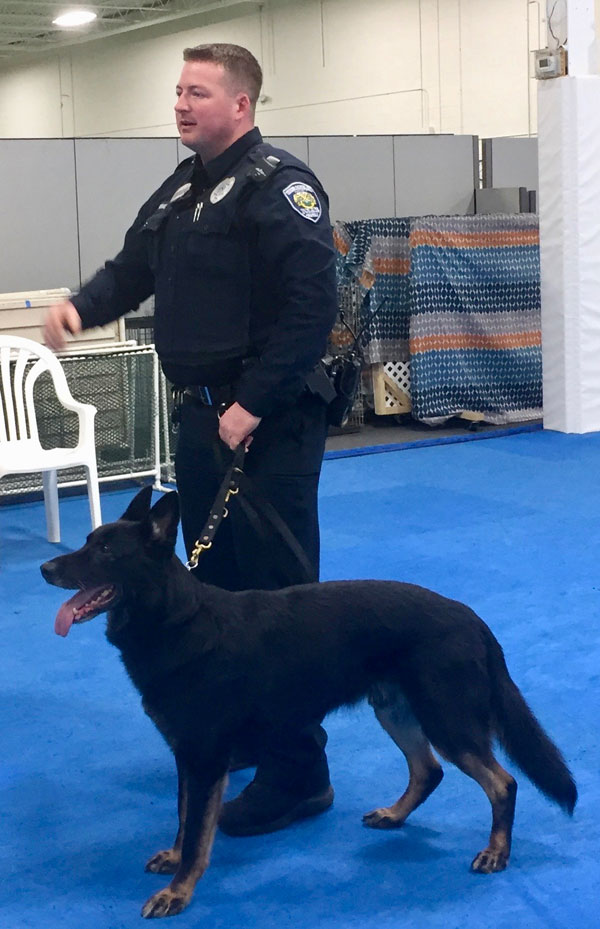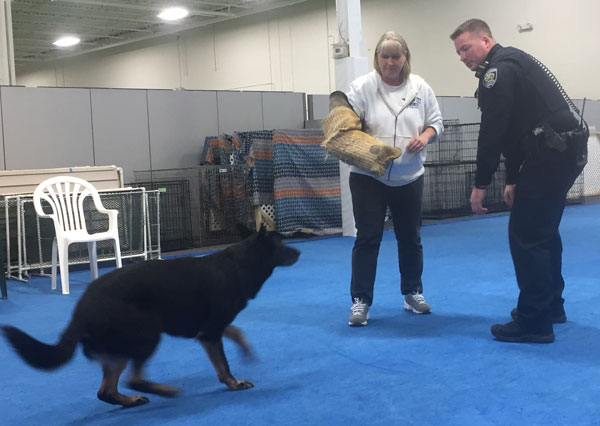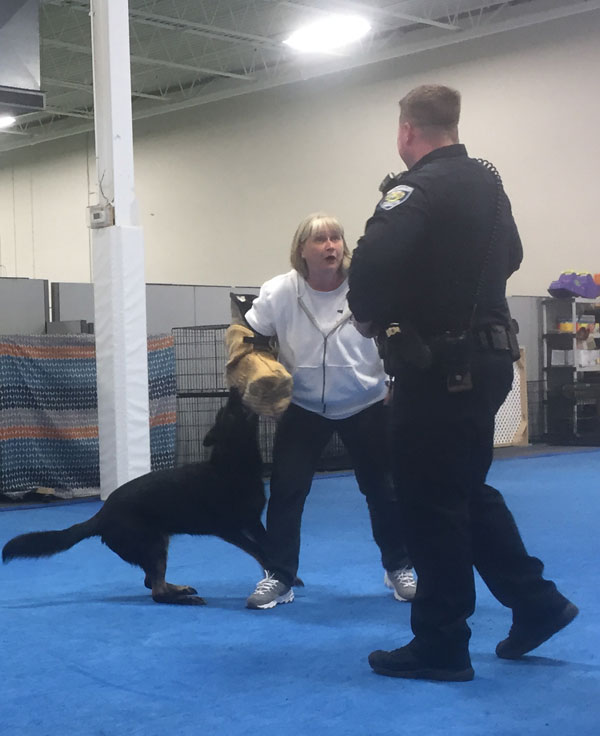loading...
by Heather Kolesa | May 9, 2017 | Y2K9s News
“Nobody knew that health care could be so complicated.”
To insure or not to insure? That is the question – with no easy answer. Your five-year-old dog may have suffered one brief bout of diarrhea after eating some unknown goody – otherwise, nothing. Maybe little more will ever happen. Or he may contract Lyme disease, or injure himself chasing a wayward Frisbee. How comfortable will you be, counting on your good luck and his good health?
There’s no easy answer. Pet insurance has been around for decades, yet there are still plenty of us who would rather keep our fingers crossed than sign up. As more insurers enter the market, there are ever more options to consider: coverage for alternative therapies, for example, such as acupuncture or behavioral problem-solving.
In this article, the first in a series, we look at some of the likeliest options your potential insurer might offer. Our goal is to provide you with the tools to make informed, thoughtful decisions.
Deductibles
If you’ve ever insured a car or a house, you’ve encountered deductibles. A $250 deductible means that your insurer –or YIC (for Your Insurance Company) -- won’t pay the first $250 of your costs. You will. You might skid on a nasty patch of black ice one wintry night and wind up with your car partially squashed against a utility pole. Happily you’re not hurt, but your car will need $1,500 worth of repairs. Because of your $250 deductible, the most YIC will reimburse you for will be $1,250. In addition to the amount of your deductible, YIC might also have offered you another choice: annual or per incident deductible. If you selected annual, and something else goes wrong with your car in that same insurance year, you won’t have to pay that $250 again. With a per incident deductible, you’ll pay that first $250 each time something new goes wrong.
You’ll probably also need to select your reimbursement level (sometimes called a “co-pay”). If you chose a 100% reimbursement level for your newly pleated car, YIC will pay you the entire remaining $1,250 on your repair bill. If you chose a 90% level, YIC will pay you 90% of the $1,250 it owes you. Please note – this is not 90% of the original cost to repair the car, but 90% of the cost after the “deductible.” With a 90% reimbursement level, your payment from YIC is now down to $1,125. And that’s assuming they accept the repair bill as reasonable.
Most pet insurers offer similar options. However, veterinary care is not as cut and dried as car repair. So when you’re ready to consider individual insurers, we suggest talking to your vet(s) and fellow dog trainers about their experiences, including how picky a company has been about veterinary costs and recommended procedures. Do yourself a favor: take careful notes. Each insurer will vary from the next one, but hardly any will vary in the same way. The more details you record, the easier your decision will be.
Of course, each choice you make will affect the annual premium you pay. The lower you make the “deductible,” the higher your premium will be. The lower you make the reimbursement level, the lower your premium will be. It’s a balancing act. And unless you’ve learned how to predict the future, it’s not much better than an informed gamble.
Finally, keep in mind that every pet health insurer excludes “pre-existing conditions.” So once you’ve signed on with YIC, if your dog should develop a chronic condition or a degenerative disease (such as dysplasia), you’ll probably be stuck with YIC. That’s not necessarily a bad thing, but it’s something to consider when you’re asking others about their pet insurance experiences. Fortunately, you can make changes in other areas. Most insurers allow you to modify your options when you renew. Renewals are usually done annually, but some insurers allow you to modify an option at any time.
Next time, we’ll look at more options. Please let us know if there are aspects of health insurance you’d like us to explore sooner than others, or if you have any questions. We’ll address as many of those as we can, depending on space as well as relevance to our readers. Contact us here.
Barbara Silverstein is an editor of Chew on This
[cro_button text="Back to Chew on This Vol. 2, No. 1" link="http://us14.campaign-archive1.com/?u=937a542e4cb9e69b1635fc572&id=5149976e82" color="1"]
by Heather Kolesa | Dec 10, 2016 | Y2K9s News
December 31st is a celebratory holiday. But the fireworks, noisy crowds, and flashing lights of New Years’ Eve can be anything but a party for your dog. So before your pup has a panic attack, take some measures to reduce his stress level.
If you anticipate a problem, consider picking up some Rescue Remedy®, a blend of liquid flower extracts that can help relieve stress. Check the label for the dosage, and give it to your dog about 30 minutes before the action starts.
A ThunderShirt® offers proven relief for many stressed out dogs (and cats too!). It wraps around most of the body, applying a comforting pressure that soothes and calms the dog.
Rescue Remedy can be found in many grocery, health, and pet supply stores, and both items are widely available on line.
As midnight approaches, make sure your dog’s environment will help keep her calm. Is her bed, or a favorite chair, ready for her, with a favorite toy or two? Play some music at a volume loud enough to drown out some of the outside noise (though do be mindful of your neighbors). Draw the curtains or close the blinds to reduce the effect of sudden flashes of light. Your stressed-out dog will respond to your cues, so stay calm and relaxed. And breathe: long, slow, calming breaths.
If you know that loud noises will be extremely upsetting to your dog, consider discussing some anxiety-reducing medicine with your veterinarian well before the big day.
Finally, as you make your own New Year’s resolutions, don’t forget a workout routine for both you and your dog.
Have a great holiday season and a splendid New Year!
Adapted from an article by Beverly Jogan, VMD, published in The Wag Times, the monthly newsletter of Whole Animal Gym (WAG), with their permission.
[cro_button text="Back to Chew on This Vol. 1, No. 4" link="http://us9.campaign-archive1.com/?u=6e209ceaaa80d7f3a608371e7&id=33cec70536&e=" color="1"]
by Heather Kolesa | Dec 10, 2016 | Y2K9s News
Holidays are for splurging. We heap our plates with rich and delicious dishes, and eat until we can barely move!
Keep in mind that the high fat content in turkey, goose, duck, and many gravy recipes, can cause a variety of intestinal issues for dogs. They can even cause pancreatitis.
According to Dr. Beverly Jogan of WAG (Whole Animal Gym) in Philadelphia, a little goes a long way. Special treats should not make up more than 25% of your dog’s normal food intake. And when you feed leftovers, make sure to cut down proportionally on regular food. So if your dog normally eats four cups of pet food per day and you give one cup of leftovers, feed no more than three cups of regular food. In the long run, you aren’t doing your pet any favors by overfeeding.
Skip the gravy. It promotes overeating and, because it tends to be fatty, can upset the digestive system.
The best part of the bird to share with Fido is white meat, which is lower in fat than dark meat. And no fat, no skin, no bones. None!
Stuffing and mashed potatoes are fine in very small amounts, and raw or steamed veggies are always great. Green beans, Brussels sprouts, carrots, pumpkin, and sweet potatoes that have been steamed and mashed, are tasty and nutritious additions to any meal. Don’t forget that grapes and raisins can be extremely toxic to dogs. Make sure they aren’t hiding in that leftover stuffing. If you’re not sure, don’t share!
Adapted from an article by Stephanie Valentino, published in The Wag Times, the monthly newsletter of Whole Animal Gym (WAG), with their permission.
[cro_button text="Back to Chew on This Vol. 1, No. 4" link="http://us9.campaign-archive1.com/?u=6e209ceaaa80d7f3a608371e7&id=33cec70536&e=" color="1"]
by Heather Kolesa | Nov 8, 2016 | Y2K9s News
[cro_halves_layoutstart]
The membership meeting on November 5th turned was an entertaining and informative event. After a delicious meal from Zoe’s, Upper Moreland K9 Patrol Officer Brian Scott and his partner, Dex, provided a fascinating presentation complete with a bite demonstration. The membership meeting included an update of transitions on the board and forthe registrar, as well as some other important information about the club and its members.

K9 Patrol Officer Brian Scott and Dex
[cro_halves_layoutmid]

This is Joyce Smuda taking a bite from Dex.

[cro_layoutend]
by Heather Kolesa | Sep 22, 2016 | Y2K9s News
“The first time I met Katie, she was training to run a marathon,” says Rosie Sutherland, Y2K9s’ director of Agility. That drive to excel has been a guiding force in her life, and helped propel Katie to four international agility competitions, the most recent one this summer. It all happened in a surprisingly short period of time. Sally Silverman recalls when Katie “was a newbie. I showed her the ropes. Now she’s the international competitor who can pull a streak of 12 or more blue ribbons in a single weekend – truly a reflection of her hard work and dedication.”
Katie started taking classes in 2000 with Oreo, her first Sheltie. Her second, Chip, became a local agility star. Twix joined the pack in June, 2003. Though Katie did well with Oreo and Chip, it was Twix that made the difference, according to Rosie. “He was so much more competitive,” she explained, “so focused. He always wanted to keep working, no matter what.” He was the ideal partner for Katie. With both team members pushing their limits, they were flying to Arizona for USDAA Nationals by 2005. Two years later, agility champion Karen Holik saw Katie and Twix in action at an agility seminar, and encouraged her to try out for the AKC World Team.

Ritz in action
They did, in 2007 and 2008, while honing their skills at the AKC Nationals as well. In 2009, they made the World team, and it was off to Austria. In the first international competition they ever entered, Katie and Twix finished 5th in the world in the individual competition.
Year round-training for Katie and Ritz includes a full schedule of conditioning routines, with special emphasis on flexibility for both team members: “I think if you’re doing a lot of competing, you and your dog need to be in good condition,” she says. “And that includes a lot of stretching to keep both of you limber.” To that end, Katie works out and sees a chiropractor regularly, while Ritz has regular visits with a chiropractor and a physical therapist.
So how do you get to Ruitz? Practice! Practice! Practice!
In late July, Katie and Ritz, her seven-year old Sheltie, flew to France to compete in the European Open 2016. After a day of sightseeing in Paris, Katie and Ritz traveled by bus to Ruitz (formal name: Maisnil-lès-Ruitz) for two days of practice. The official warm up, vet check, and opening ceremonies followed, culminating in two days of competition. The team came home on August 1st.

Katie and Ritz
“I had a great time,” said Katie a couple of days after she returned. “But we didn’t do as well as I had hoped. You just don’t see that level of competition in this country. It’s so much faster, more intense – everyone is going for the win every time.”
In addition, European agility courses differ from those we see in this country. They are set up for speed, and their challenges are much greater. As Katie points out, “The courses that we run here are required to have the table and tire in every single course, no matter what the dimensions of the venue.” European judges don’t have to include every element in every course.
European courses also cover a lot of territory, and are governed by different regulations. As a result, European judges can construct all kinds of challenges within their courses. “There were seven back sides in one of the courses we ran,” marvels Katie. “You’d never see that in the US. On top of that, the Europeans are used to competing in those kinds of courses. We aren’t.”
Katie sends a giant thank you to “everyone who supported me by buying T-shirts and magnets, and to all who encouraged me – it meant more than I can ever tell you.” And she’s already preparing for Italy 2017, “concentrating on taking as many seminars and lessons as I can with people who can help me improve.”
That concentration, that intensity that Katie exudes is legendary among Y2K9ers. It was in Rosie’s classes that Janie Harris first got to know Katie, who soon took Janie and her dogs, Booker and Bailey, under her wing. Katie rarely hesitated to give advice, usually beginning with, “Janie, you need to....” Janie recalls a time when their class with Rosie was switched to a later hour. “I can’t possibly get up at 5 am to teach and still do this class,” Janie confessed to Katie. “Janie, you need to man up and do what’s right for your dog,” was Katie’s reaction. Janie dutifully signed up. At the end of the first class, an exhausted Katie turned to an equally exhausted Janie, telling her, “OMG, we are never doing this again.”
Katie’s single-minded focus carries over to her classes, which, as many Y2K9s students know, are usually energetic, and often demanding. But as Rosie points out, she’s also “very supportive, and will always be there for you. I think she’s a natural-born teacher.” This reporter was in Katie’s classes for several sessions in the early stages of our agility training. One evening, she set out an unusually challenging course. I remember feeling pretty good about the evening. The next day, I found an email from her in my inbox:
From: Katie Abrams <oreochiptwix@yahoo.com>
Date: May 14, 2008 5:51:07 AM EDT
To: Barbara Silverstein <basilverstein1@verizon.net>
Subject: class last night
Barbara - you & Lucy were spectacular! I really enjoy watching you both develop as a team. You handled her beautifully, and she knew exactly what to do! Keep up the hard work.
I have kept it to this day.
So congratulations to you, Katie, for your amazing spirit and ability, as teacher, colleague, and competitor. The entire club will be cheering for you, all along the way to Italy.
Barbara Silverstein is a Y2K9s Member and co-editor of Chew On This.
Watch these videos of Katie and Ritz in action:
[cro_video no="https://www.youtube.com/watch?v=DVJb5yCr10U&feature=youtu.be"]
[cro_video no="https://www.youtube.com/watch?v=YVh8cT4l1KY&feature=youtu.be"]
[cro_button text="Back to Chew on This Vol. 1, No. 3" link="http://us9.campaign-archive1.com/?u=6e209ceaaa80d7f3a608371e7&id=43bfb6e6dc&e=bec7545c5c" color="1"]
by Heather Kolesa | Sep 22, 2016 | Y2K9s News
[cro_thirds_twothirds]
You wouldn’t dream of driving without making sure your kids are safely buckled up, or strapped into their car seats. You probably buckle up yourself – it is the law, after all. But what about your dog?
According to the US Census Bureau, there were 10,800,000 motor vehicle accidents reported in 2009. “A dog is just as vulnerable to injury in a collision as we are,” says Dr. Debbie Mandell of Penn Vet’s Ryan Hospital and a pet expert for the American Red Cross. One of the worst cases she’s seen involved a collie that was thrown forward from the backseat and sustained a broken back. “I always advocate some sort of restraint for a dog travelling in a car,” she says. And just like a small child, a dog riding in the front seat can be injured, even fatally, by an airbag deployed in a crash.
There are other powerful reasons for restraining your dog. A 60-pound dog traveling at 35 miles an hour can become a 2,700-pound projectile in an accident. Imagine that hitting the back of your head.
An unrestrained dog can even cause an accident. A friend tells of her German Shepherd playfully putting his paw on the steering wheel, causing her car to crash into a tree. A news report described a fatal crash in which one of the drivers was distracted when his dog jumped into his lap.
Frightened by the trauma of a crash, dogs have been known to jump out of a car and run away, or be struck by another car on the road. If the dog doesn’t leave the vehicle, it could hinder rescuers.
Finally, states and municipalities have been enacting ordinances requiring restraints for dogs in cars, with fines of up to $1,000, and, in some cases, prosecution.
What are your options?
Crates are a common choice. Barriers that confine the dog to the cargo area, seatbelt harnesses, and travel carriers are also available. There are pros and cons to all of them. Unfortunately, such agencies as the US Department of Transportation, the Insurance Institute of Highway Safety, AKC, ASPCA and the National Highway Traffic Safety Administration show inconsistent data on the safety of these options. Until better studies are available, choose the solution that best serves both you and your dog.
The crate
A crate will prevent driver distraction and may keep the dog safely inside the vehicle. It might also prevent injury to other occupants in a crash if it is properly secured, and the impact is minimal. Ditto a plastic kennel. But there is little information on the crash-worthiness of most crates. An Internet search will turn up lots of amateur videos showing the relative safety of a variety of crating systems, but painfully little data to support claims.
The Variocage crate, by Mim Construction AB, is constructed of steel and equipped with an escape door, and is perhaps the only safety-tested crate available. However, test results appear to be inconsistent, and the crate is very expensive.
For use with a crate on a seat, PetBuckle® markets a crash-tested kennel restraint system. The crate sits lengthwise on the seat and is secured by two straps, distributing the pressure force in the event of a collision.
Crates should always be secured. Bungee straps, though popular, are susceptible to stretching and breaking. A ratcheting system coupled with high strength straps is the most reliable.
Custom crates are frequently seen in the rear areas of open vehicles at dog trials. Considerations should include durability of materials, ease of access from more than one side, and ability of the crate to be safely secured.
Putting up barriers
Another popular option, particularly with SUVs and station wagons, is a barrier placed between the cargo area and the back seat. This gives the dog some room to move around; it also means the dog could be tossed about in an accident. Metal barriers may keep driver and passengers from being hit by the dog, but mesh barriers will unlikely have the strength to keep the dog contained. And if the vehicle’s rear windows are broken in the crash, the dog has an easy access to escape. Another caution: barriers must be correctly and securely installed to be safe and effective.
Belting them in
When it comes to securing your dog in the car, there are many versions of pet harnesses to choose from. Made of a variety of synthetic fabrics, the harnesses clip to seatbelts or provide a loop through which the seatbelt can pass before being fastened. Some can be attached to the vehicle using the anchor points used to secure child safety seats.
When choosing a harness, consider fit and strength of materials. Ideally, it should attach to the buckle part of the seat belt apparatus, rather than the belt itself.
Boosters for small dogs
A small dog booster or car seat may prevent the dog from wandering around the car, but not much more. When used in conjunction with a harness and secured properly, it may prevent the dog from being hurled forward in a collision. The same guidelines that apply to harnesses for larger dogs will apply to those for small dog booster seats. But no matter which one you choose, the dog is still in danger of injury or death when an airbag is deployed.
The last word
Restraining your dog when traveling will make your ride, your passengers’ rides, the dog’s ride, and even the rides of others on the road safer. However, the choice for making car travel safe for your dog is not an easy one. Once you’ve decided on your method of restraint, look for the product that best fits your needs. Durable materials are a must, as well as a system that will not give way in a collision. Contact the manufacturer of a product you are considering to ask if they have done any crash testing. If so, ask where you can read about it.
Dogs are such an important part of all of our lives. By all means, bring them along, but make sure they are safe on the way.
[cro_thirds_onethird]
Mention auto safety and cars, and everyone has a story.
Here are just a few:
- A dog sitting on the front passenger seat was thrown into the dashboard, sustaining a fatal head injury.
- A collie riding in the back seat was thrown over the front seat when the car was involved in a collision, breaking the dog’s back.
- Three dogs and their owner were uninjured in a collision on a highway, although the dogs were able to exit the auto. The owner took off after them. Two of the dogs and, sadly, the woman, were then hit by other vehicles and killed.
- A Labrador lying on the back seat was thrown forward when the car he was in rear-ended another. Damage was negligible; insurance information wasn’t even exchanged. The dog’s injuries, however, were fatal.
[cro_layoutend]
Sally Silverman is a long-time instructor at Y2K9s, and a freelance writer
Thank you to Clean Run for allowing the use of this article, originally printed in their June, 2012 edition.
[cro_button text="Back to Chew on This Vol. 1, No. 3" link="http://us9.campaign-archive1.com/?u=6e209ceaaa80d7f3a608371e7&id=43bfb6e6dc&e=bec7545c5c" color="1"]





